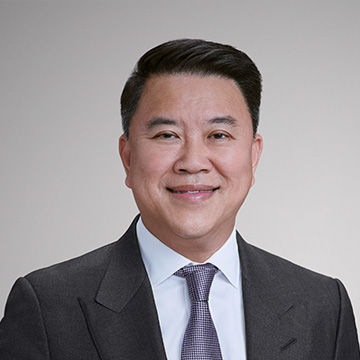
Why Siam Commercial Bank is transforming itself into a fintech group
With its reorganisation, the group plans to expand to a customer base of 200 million.
The future is digital, and no other bank in the world is embodying this more than Siam Commercial Bank’s reorganisation to become SCBX (stylized with the x in superscript). The overhaul will see one of Thailand’s biggest banks transform itself beyond being a traditional financial institution, and towards being a comprehensive financial technology group.
“The role of the bank as an ‘intermediary’ will change to that of a platform,” Arthid Nanthawithaya, Siam Commercial Bank CEO and chairman of the executive committee, told Asian Banking & Finance in an interview. “We will expand our customer base from 16 million customers to more than 200 million. Our geographical coverage will shift from 'local' to 'regional' through a growth strategy featuring M&A and partnerships with market leaders.”
All of these underline SCBX’s new vision: to be the most admired financial technology group in ASEAN.
The step to change their business model from a traditional bank to something more akin to trailblazing fintech company started SCBX five years ago. Apart from upgrading the bank’s tech foundation, SCB had also set up a number of tech-driven startups under the SCB Transformation Project.
Amongst their hit tech firms include SCB 10X, which received $400m in tech investments to date; and Purple Ventures, whose “Robinhood” food-delivery app now has over 2 million users and is expanding into non-food services.

Arthid Nanthawithaya, CEO and chairman of the executive committee, Siam Commercial Bank
“Nonetheless, we have come to realize that despite early success in certain areas, we could have delivered innovative growth at a much faster pace had we done this outside the traditional banking structure. This led us to reimagine the entire group structure,” Nanthawithaya said.
Asian Banking & Finance chatted with SCB’s CEO to learn more about the reorganisation.
What pushed SCB to transform itself into becoming a financial technology group?
The increasing adoption of digital technology has rapidly changed consumer behaviour. At the same time, industry competition has intensified, industry boundaries have blurred, and macroeconomic conditions have become volatile and fragile. These events led us to rethink, or rather to re-imagine, how to sustain growth and profitability through what has become the new normal.
We decided to set up SCBX as a mothership to direct the group’s strategic direction toward more efficient resource allocation to take advantage of synergy across the group in order to unlock value. We also moved innovative change elements outside the bank to leave the bank as a cash-cow business.
Many have asked us whether the new structure will allow us to ring-fence strict banking regulations. In fact, regulation was not a key driver for this change. SCBX will still be under close supervision by the Bank of Thailand. To us, what makes a difference under the new structure is governance, a risk-return mindset, and a new incentive structure.
Under the new structure, the CEO of each subsidiary will be accountable to his or her board of directors and not to me as a group CEO. We will govern new growth subsidiaries through a board of directors that will have the specific industry expertise to enable them to make timely decisions. In terms of a risk-return mindset, each subsidiary will be able to adopt risk-return criteria that is the norm for its industry, rather than rely on the bank’s rigid risk-return standard.
We will also be able to attract the right talent under the new structure with a new value-based performance measurement system.
How different will SCBX be structurally, and in terms of propositions offered, from what SCB has offered for the past one hundred years?
Our new vision is to become the most admired financial technology group in ASEAN. The role of the bank as an ‘intermediary’ will change to that of a platform. We will expand our customer base from 16 million customers to more than 200 million. Our geographical coverage will shift from “local” to “regional” through a growth strategy featuring M&A and partnerships with market leaders.
We will reorganise our businesses into two groups. Banking operations will remain as a cash-cow business. We will no longer impose disruptive changes on SCB banking functions, and the bank will continue to operate in a relatively low-risk, low return environment. We are working on business portfolio optimisation and creating a lean operation with increased digitalisation in our work processes and services to lower service costs.
Another group consists of subsidiaries in high growth, high return businesses. Under this group, we have two types of subsidiaries: 1) digital lending and consumer finance businesses and 2) tech platform-driven businesses. We believe digital lending and consumer finance businesses in Thailand are still blue ocean.
Key subsidiaries under this group are Card X (an SCB Bank spin-off operating credit card and unsecured personal loan businesses), Auto X (a newly set up subsidiary operating a title loan business), and AISCB (a new joint-venture company with one of the largest telecom operators focusing on personal loan business). In the tech platform business, key subsidiaries are Robinhood (our one-year-old food delivery platform which is to be transformed into a super app), and SCB10X and SCBS (spin-off subsidiaries from SCB Bank focusing on digital asset investment and a digital ecosystem).
We also set up SCB Tech X and Data X to provide IT infrastructure solutions as well as data AI to subsidiaries within the group. This will ensure cost efficiency and data capabilities across the group. There are also a number of other subsidiaries that we did not mention here, and we continue to look for growth opportunities elsewhere in the region.
To achieve this restructuring plan, we will redeploy excess capital from the bank to SCBX in the form of a one-off dividend totalling ฿70b. After the capital release, the bank will still operate at healthy and sustainable capital levels, whilst redeployed capital should generate much higher returns in the long run.
We have set a target of achieving high-teen ROE in five years’ time from the current single-digit ROE. The bank will generate more-or-less stable earnings while the adjacent lending subsidiaries should be earnings accretive almost immediately as the key business is a spun-off entity with expected improved efficiencies. The profit signature of the tech platform subsidiaries may come at a later stage, but will be able to contribute high double-digit ROE once we scale up.
How do you plan to continue to support your traditional bank clients whilst evolving into a financial technology company? How does this reorganisation benefit current customers?
One key reason for changing the group structure is to reduce disruption to the bank business. We have learned from our digital transformation that it is very challenging to ask bank executives to make transformative changes whilst expecting them to continue maintaining quality services and delivering core profits. We found that creating a separate team to focus on building new things is more effective. This approach also allows the bank management team to focus on improving the quality and efficiency of the existing banking business.
This group restructuring does not affect bank operations, and customers should not be impacted by the group restructuring itself. Bank customers should be able to continue making transactions, deposits, payments, and other services just as they did before. The branch network, SCB EASY, and other service channels will remain available to our customers.
Going forward, with enhanced technology and data capabilities, our group should be able to provide better financial services and products to a larger customer base with speed, simplicity, and affordable prices while being able to drive better growth and returns to our shareholders as well. As each of our subsidiaries will expand based on digital technology-led strategies, the group should enjoy access to enhanced and complementary big data. With such data capabilities, the group should then be able to continuously improve the quality of its services with improved speed and pricing.
Existing bank customers will find the overall customer experience more fulfilling, with complementary services from new growth businesses outside the bank. A case in point here is that our small merchant customers have fully benefited from the Robinhood platform from the beginning of our launch last year with our zero GP model. In the future, they should find their increasingly diverse financial needs will be more conveniently met.
What financial businesses, platforms, and services does SCBX plan to launch and offer?
We have many plans up our sleeves! New products and services will be along the line of our vision of becoming the most admired financial technology company. From the list of subsidiaries that we have announced, you can see that we will have a number of new services to be launched in 2022 in consumer finance-related fields, such as title loans, luxury car financing, new lending platforms, and many more. In the platform space, some of the initiatives that we have mentioned or launched with our partners so far include tele-med, digital asset exchanges, and others. At this stage, we want to highlight our homegrown “Robinhood” food-delivery app. We onboarded more than 2 million users and 140,000 merchants in just one year, and we have announced that the Robinhood app is expanding into non-food services (e.g. online travel), aspiring to become a Super App next year.
The press announcement regarding your reorganisation also mentions that SCBX plans to enter the digital assets business. Can you elaborate on this? How does SCBX plan to leverage digital assets as a new way of offering financial services and/or meeting financial needs?
We have a strong belief that digital asset usage is still in an early stage of growth and will become an asset class in its own right. Traditional banking business will be disrupted by the rise of digital assets supported by blockchain technology, and we want to be at the forefront of this disruptive trend. Technology is evolving quickly and requires us to be adaptive.
It is important to mention that we have no plan to invest in or speculate on the value of digital assets or cryptocurrencies. That is not our value proposition to our shareholders. Rather, our strategy is to build a digital asset ecosystem to include, for example, digital asset exchange and custodian services to service the growing group of customers interested in digital assets. Our recent announcement on the acquisition of a 51% stake in Bitkub, a local digital asset exchange, is one of the first steps for us to make an inroad into the digital asset infrastructure space.
SCBX has outlined its goal of achieving a network of 200 million customers by 2025. What drives your optimism that you can achieve this goal in less than four years? What can bank and financial customers expect to see from the reorganised SCB?
It is indeed a challenging target. Our plan is to expand our customer base via a digital ecosystem and technology platforms to enjoy network effects.
We will partner with leaders in various industries to enlarge our customer base, and M&A will be key to achieving this target. This strategy will not be limited to Thailand, but also apply to our regional expansion. We will adopt an asset-light strategy to ensure efficient capital usage.
We have continued to build our technology and innovation capabilities to drive our customer base. Domestically, we have already announced our partnership with leading telecom operator AIS. These are our initial steps and there will be many more to follow.
We believe we will stay relevant through the power of platform networking driving a large customer base and making finance simple, accessible, and affordable for all through the power of technology and innovations.
Is there anything else you would like to add that we may have missed?
My management team and I are very committed to our new vision. We have always endeavoured to find new growth trajectories and to become more innovative. We believe the new structure under SCBX will be the right platform for us to move ahead. We have set our aim high with bold targets to achieve a ฿1t-market cap in five years’ time.
Our thinking is that the growth bucket will contribute to more than one-third of our business in five years’ time from around 10% today. By then, we should see our ROE in the high teen level. Despite many variables and uncertainties, we see ourselves as rather unique in that we are not a pure tech startup that requires burning a lot of cash upfront.
We already have established franchises and branding in the market, with a cash-cow business providing stable capital over the years, so we are very excited about our new journey.





















 Advertise
Advertise












